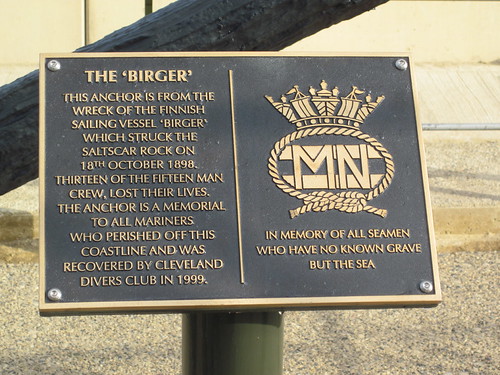This plaque once marked the part of the North Riding Infirmary that was erected as a memorial to Sir Bernhard Samuelson by his sons in 1906.
The porch in question is the arch that was put around the corner when the hospital was demolished in 2006, as that has a 1906 date stone on it.
The porch and two wings either side are clearly from the later date as they are a different colour to the rest of the 1864 building in this picture.

The plaque is currently located in an exhibition at James Cook hospital.
 Show on map
Show on map




















